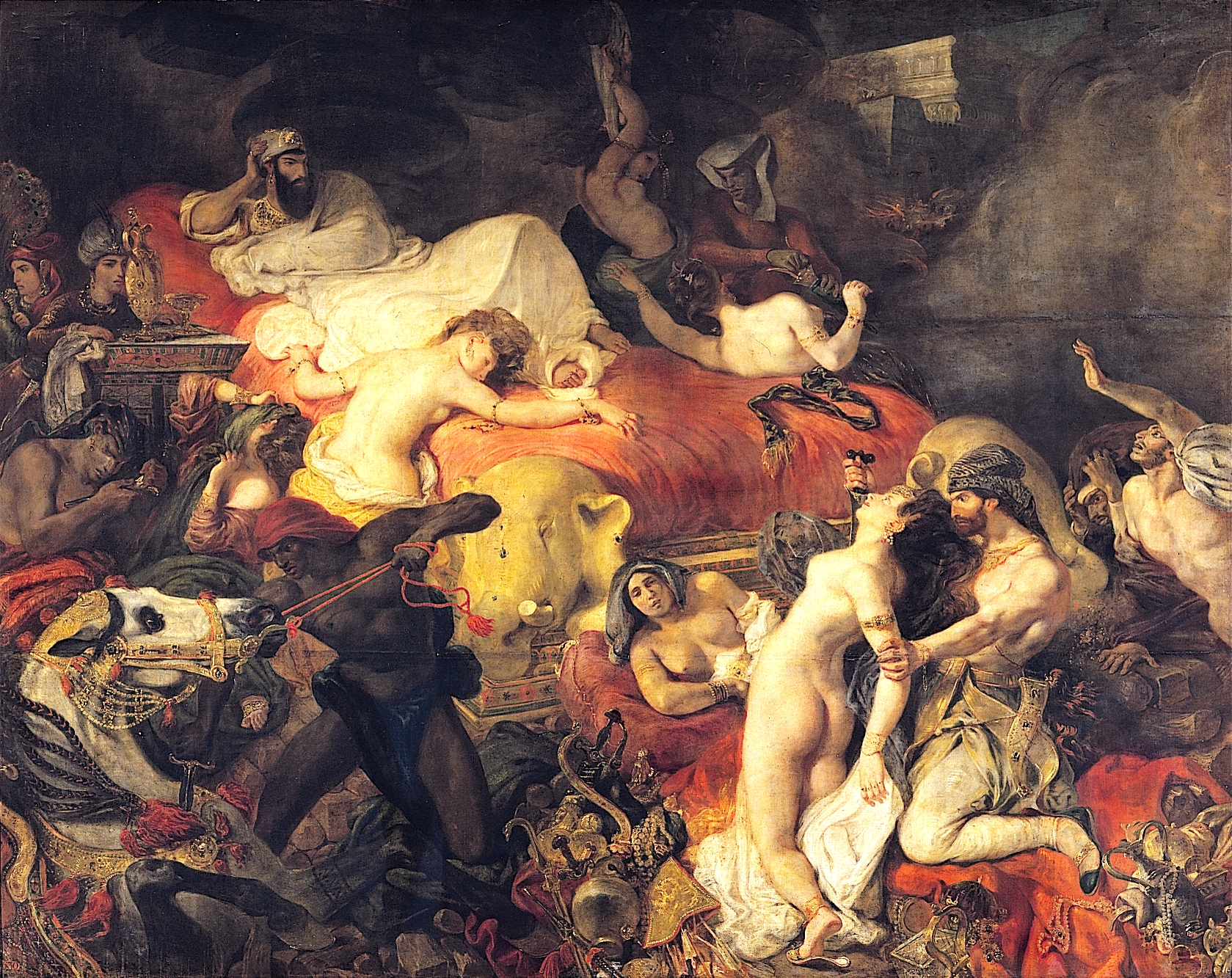The artwork titled “The Death of Sardanapalus” is a work by Eugene Delacroix, created in 1827. It is an oil on canvas painting measuring an immense 392 by 496 centimeters and is currently located in institutions such as the Louvre in Paris, France, and the Philadelphia Museum of Art. This mythological painting belongs to the Romanticism art movement, characterized by its emphasis on emotion and individualism as well as the glorification of the past and of nature.
Eugene Delacroix’s painting “The Death of Sardanapalus” is an embodiment of Romanticism’s dramatic intensity and emotional exuberance. The artwork depicts a scene of chaotic opulence and despair, centered around the Assyrian king Sardanapalus, who is portrayed reclining on an ornate bed amid the tumult of his final hours. As his empire faces defeat, Sardanapalus has ordered the destruction of his possessions, including his horses, concubines, and slaves, choosing to deny them to his enemies. The scene is a whirlwind of movement, color, and human form, with a palpable sense of violence and sensuality. Deep, rich tones and expressive brushwork enhance the atmosphere of impending doom and the sense of the sublime that is intrinsic to Romantic aesthetics. The controversial subject matter, derived from historical legend and imbued with Delacroix’s imaginative interpretation, encapsulates a moment of extreme emotion and tragic dignity, making the artwork a memorable historical canvas of its period.






















